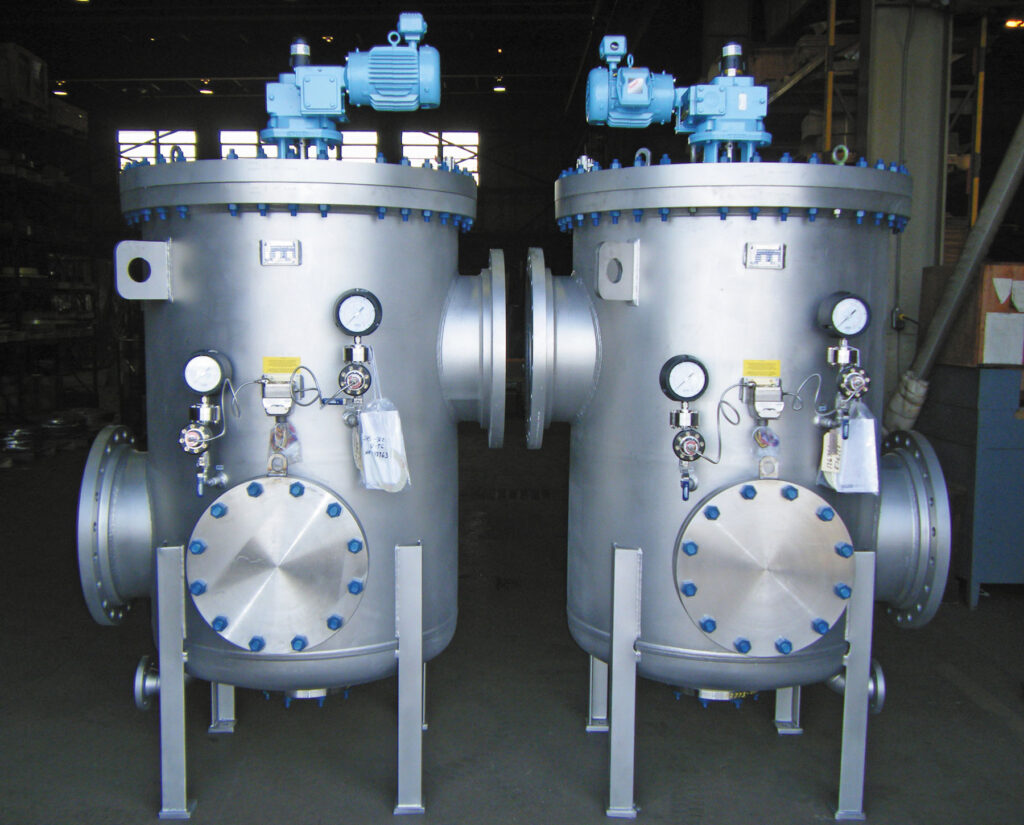GLENN MOUNTAIN
In the pulp and paper industry, superior filtration to clarify water is critical to ensure a quality product and reliable production while extending equipment life and increasing the intervals between backwashing or necessary maintenance.
Strainers are often used in the industry to reduce the concentration of suspended solids. Applications can include purifying intake water from rivers and lakes, polishing water from cooling towers and flocculation plants, purifying sealing water from vacuum pumps, and removing process debris and long fibers from recycled white water.
Accordingly, paper mills often prefilter raw water from lakes, rivers, and aquifers to remove organic, aquatic, and other solids, which allows fresh water to be used as process and cooling water. In cooling towers, filtration can improve cooling efficiency while reducing fouling and plugging. In process equipment, removing suspended fibers from white water as well as scale and debris from heat exchangers and cooling systems can prevent the clogging of equipment and nozzles.

Without adequate filtering, pulp and paper systems can be susceptible to quality issues and damage from large particulates. Any input or process water that is not adequately filtered can cause excessive fouling, leading to decreased production as well as costly, premature replacement and unscheduled production downtime.
Fortunately, a growing number of pulp and paper industry professionals are ensuring more reliable production with superior water quality by using low maintenance, multi-element, automatic self-cleaning strainers.
OPTIMIZING PROCESS
RELIABILITY AND PRODUCTION
Historically, the pulp and paper industry has used certain types of gravity strainers, basket type strainers, sand or media filters, and centrifugal separators for filtration. However, in many cases these have shortcomings that can reduce reliability and efficiency while increasing operational costs.
In response, pulp and paper industry professionals are turning to multi-element, automatic self-cleaning strainers. R. P. Adams first introduced and patented the technology in the 1960s and has more than 10,000 installations worldwide today. Their design provides an alternative to traditional strainers, filters, and separators. The multi-element, automatic self-cleaning strainers can provide continuous removal of suspended solids. When used for pulp and paper water filtration, the strainers can reliably filter out fibers, sand, silt, and other suspended solids as small as 30-100 microns in size.
A significant feature of the multi-element design is in the engineering of the backwash mechanism, which enhances reliability. With many traditional strainers, the backwash mechanism comes into direct contact with the straining media. This can be problematic, because large, suspended solids can become lodged between the straining media and the backwash assembly. The result is straining media damage and/or rupture that can compromise filtration and even other downstream equipment, hindering production.
Instead, the multi-element design uses a tube sheet to separate the straining media from the backwash mechanism. This prevents the backwash mechanism from coming into contact with the media and damaging the elements.
Pulp and paper industry operators often also need to consider how to best reduce fouling and required maintenance.
In this regard, the multi-element design provides three to four times the surface area of traditional strainers and pre-filters. This translates directly into less frequent backwashing so less water goes to waste, less power is consumed, and less maintenance is required.
While traditional media found in large basket designs can lead to collapse and failure under differential pressures as low as 35 PSID, the smaller diameter of the media used in the multi-tube strainers also enables the strainer to safely handle differential pressures in excess of 150 PSIG. This protects production even under higher differential pressures in the field, which could otherwise result in significant downtime.
As an additional protective measure, the strainers also include a shear key, which sacrifices itself in the presence of excessively large debris. Filtration continues, but operators notice an increase in differential pressure as the backwash cycle is interrupted; they can then take action to clear the obstruction and replace the shear key.
When considering technology for pulp and paper filtration systems, automatic multi-element, self-cleaning filters are an increasingly popular choice and a reliable, cost effective solution.
Glenn Mountain is general manager of R. P. Adams, a Buffalo, NY-based manufacturer of municipal and industrial liquid filtration and heat exchange equipment since 1937. For more information call (716) 877-2608, e-mail [email protected], or visit the web site: rpadams.com.
 Paper 360
Paper 360